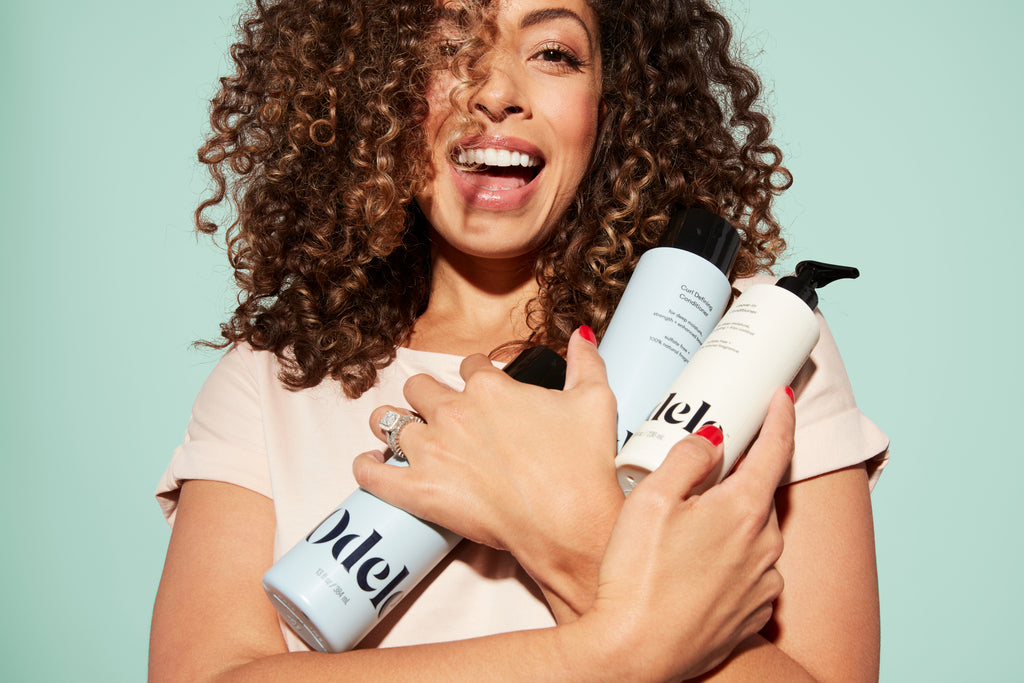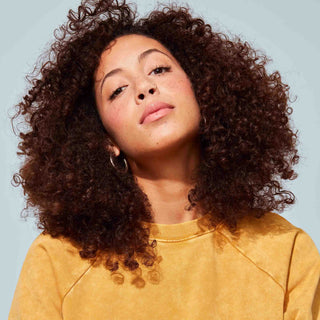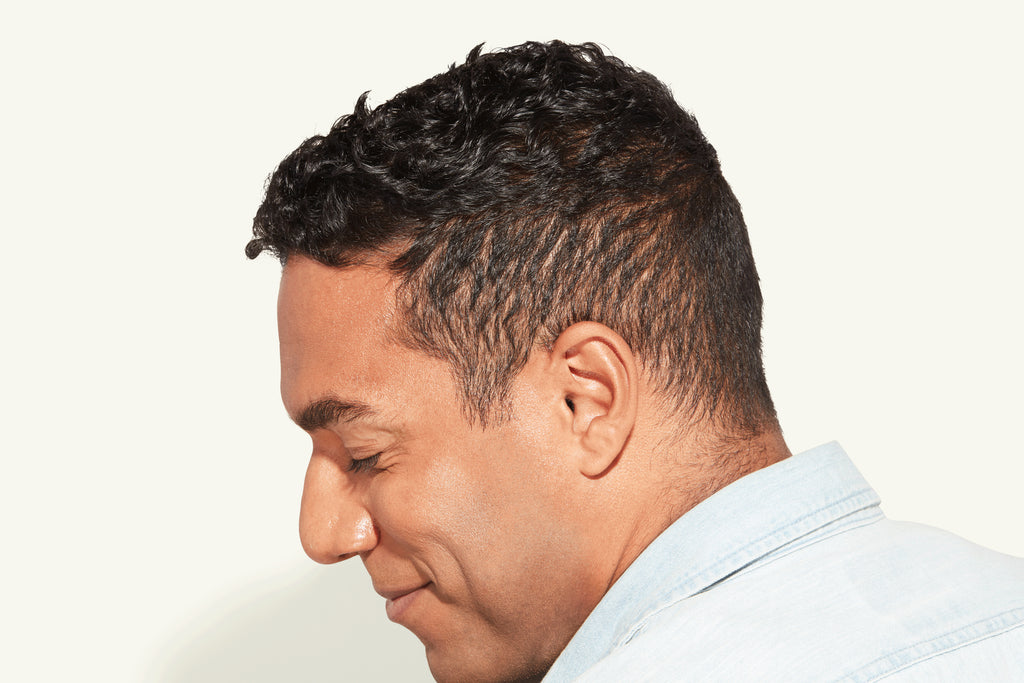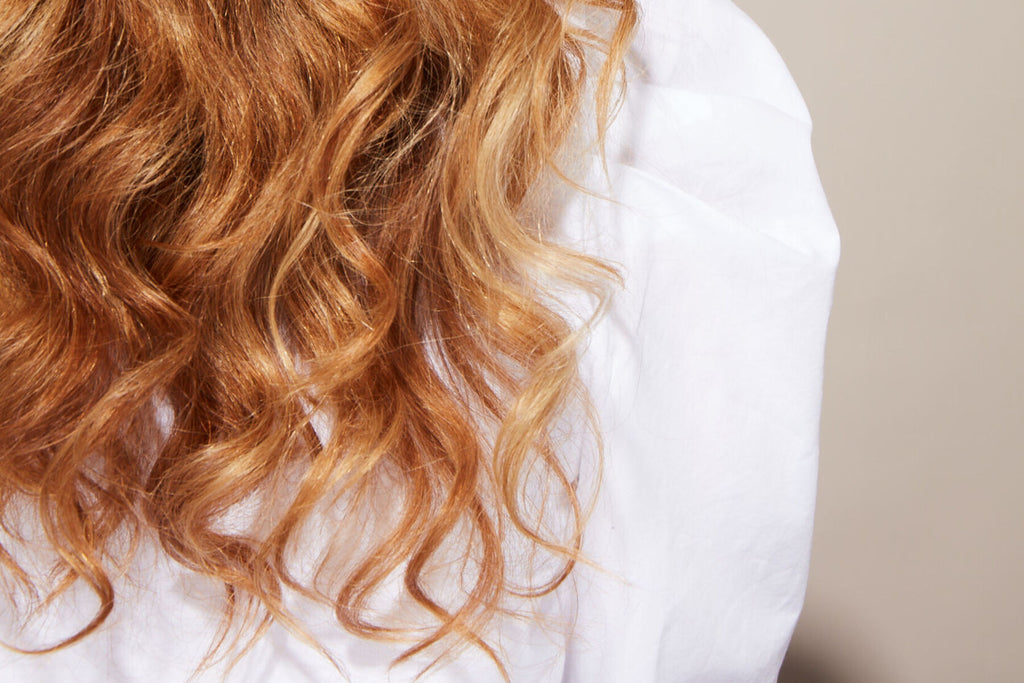Tight zigzags, bouncy ringlets, floaty puffs, springy spirals… curly hair comes in a stunning variety of textures and shapes. All that variance also means there’s no one-size-fits-all when it comes to curl care: each type has its own needs. And with about 1,289,432 curl products to choose from (hair care aisles = intimidating), finding the best routine for your hair can kinda feel like a never-ending obstacle course.
Understanding your curl type can help simplify things (a lot). For one, it will guide you toward products, tools and hairstyles that work with your natural texture, not against it. It can also help you gauge your hair’s health and answer other care-related questions—like how much product to use and when it's really necessary to shampoo. Let’s walk through how to do it.
How to identify your curl pattern + type
It’s important to call out hair typing’s controversial history and note that the system still isn’t perfect. That said, categorizing your curl type is a good starting point for learning more about your locks. Celebrity stylist Andre Walker invented today’s most widely used hair typing system in the ’90s. The curl pattern chart he created classifies hair into four types based on strand shape: straight, wavy, curly and coily.

Again, a good jumping-off point—but there’s more to curl type than meets the eye. Things like porosity, elasticity and thickness also impact how your hair behaves and the TLC it needs. To get clear on your curl type, try this:
1. Cleanse your hair. Before you begin, make sure your hair is clean and free of any product. We’re talking bare-naked, au naturale strands. Clarifying Shampoo can help here!
2. Dry your hair. Your hair should be fully dry. This will help you accurately assess your true texture.
3. Section your hair. Part your hair into four sections so you can easily examine each area of your head.
4. Observe your curls. Get up close and personal with each section. Study the shape and pattern of your curls. Are they loose and wavy, or tight and coily? Are they uniform in shape, or do they vary?
5. Compare to the curl type chart. See how your observations match up with the curl type chart to figure out your curl pattern.
6. Consider porosity, elasticity and thickness, too. Remember: curl pattern is just one part of the picture. Beyond texture, examining porosity, elasticity and thickness can give you a better idea of how healthy and strong your hair is—a big part of establishing an effective care routine.
Porosity refers to how easily your hair sucks up moisture, and it’s a key indicator of hair health. Porosity is mainly genetic, but how you style and treat your hair can also factor in over time. High porosity hair has a more open cuticle layer, making it easy for moisture to get in but hard for it to stay in. Low porosity hair has a more tightly bound cuticle layer, making it tricky for moisture to get in at all. Medium porosity is—you guessed it—balanced in between. Here’s a simple way to test the porosity of your curls.
Elasticity is all about how well your locks stretch and bounce back, like a rubber band. It’s a good indicator of hair strength: if the rubber band’s too weak, it can break when stretched—and the same goes for your strands. Since low-elasticity hair is more prone to breakage, it needs products designed to deeply moisturize and strengthen the hair shaft.
Thickness, aka diameter, is a measure of a single hair strand’s width: fine, medium or coarse. Like porosity, this one’s also pretty dependent on genetics, and a good indicator of how tough or fragile your tresses are.
Now that you’ve gotten nice and cozy with your curls, you can look for products that directly cater to their needs. For example, if you have coarse, high-porosity 4A coils, you might look for thick, deeply moisturizing products formulated for dry or damage-prone strands. If you have fine, low-porosity 2C hair, you’ll likely want something lightweight but still hydrating that won’t weigh down your waves. An easy way to get started? Take our hair type quiz to get matched with a complete routine of clean, premium hair care.
What if I have more than one curl pattern in my hair?
Fancy! And, pretty common. Most people fall somewhere in between curl types or have more than one in their hair, whether due to genetics, age, heat styling or chemical treatments. For example, you may have looser curls at the crown of your head and tighter curls at the nape of your neck. You can focus on whichever texture is most prominent in your mane, or look for products that cater to both types.











